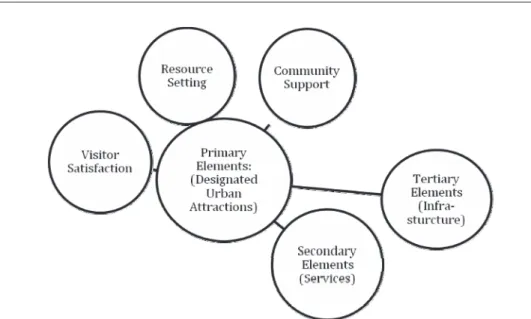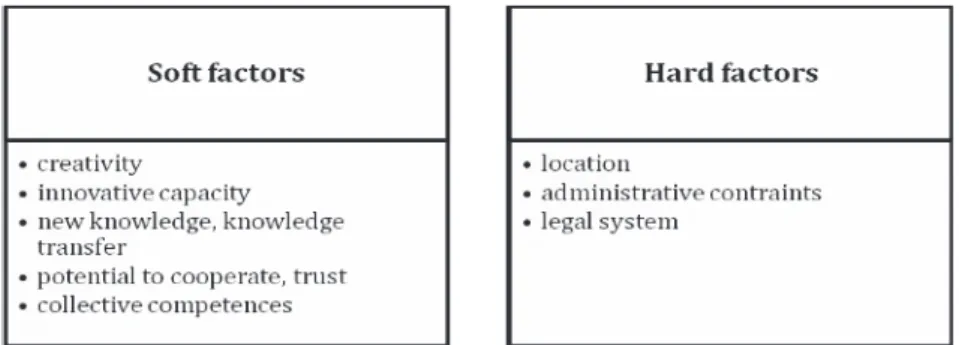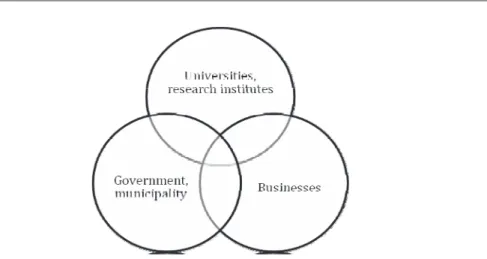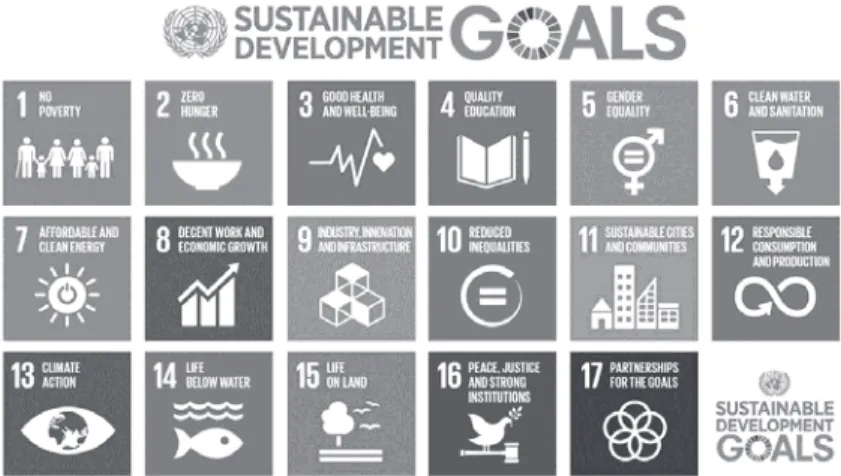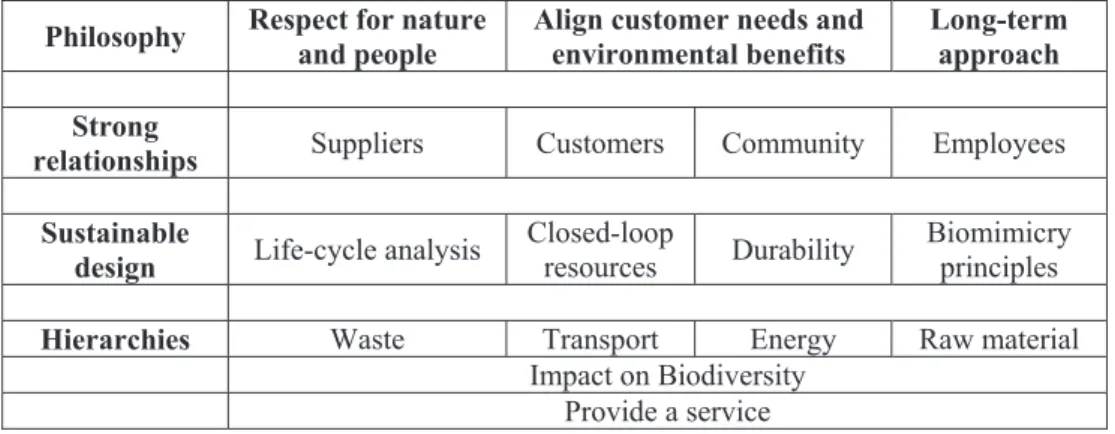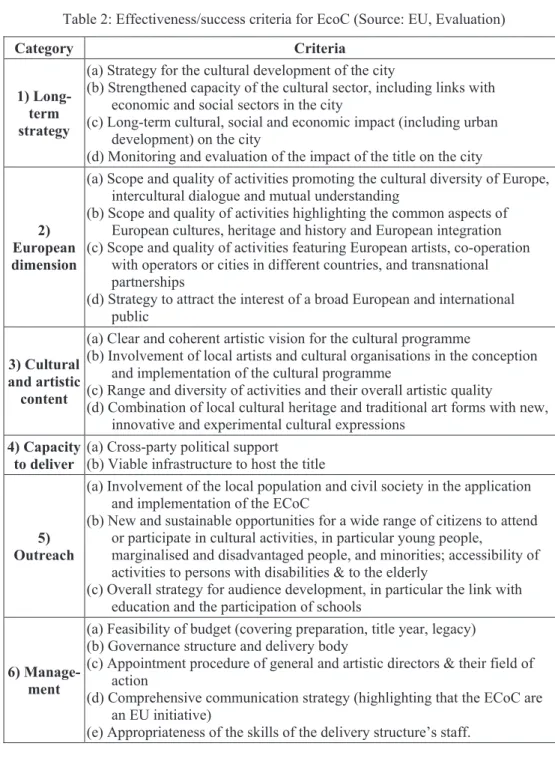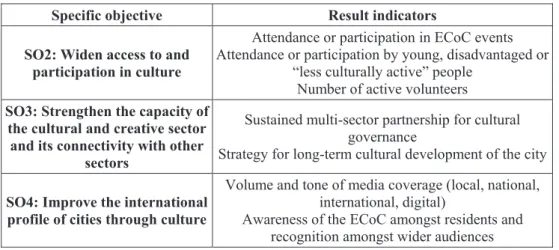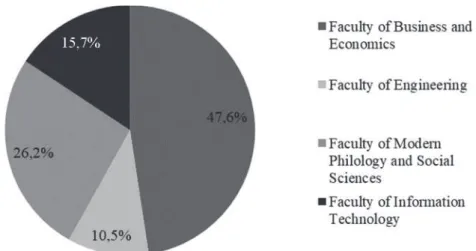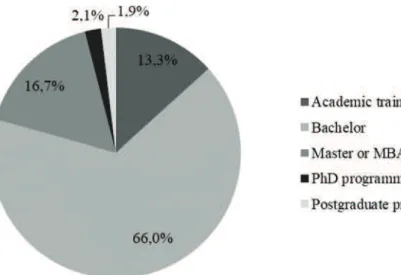SUSTAINABLE BUSINESS MODELS IN URBAN DESTINATIONS – APPROACHING THE KRAFT CONCEPT
This research report shifts the debate on sustainable tourism destinations from an emphasis on sustainable development and destination planning towards sustainable urban tourism destinations, especially in (Central) European Capital of Culture Cities (ECoC). Futhermore there are some practical approach as well: how to implement the best practices of previous ECoCs into Veszprem tender (competitor for ECoC 2023) and what kind of similarities can be found in the KRAFT concept usage.
A quantitative online survey among students (N = 420) at University of Pannonia, Veszprem, examined the temporary (but creative target group) residents’ behaviour in four major categories related to sustainable urban destination development and residents involvement: green consumption (transport use, sustainable energy/material use, behaviour and norms); daily leisure interest and activities; information sources and perspectives about city development.
Keywords: sustainable urban destinations; European Capital of Culture cities;
residents involvement; sustainable business models; KRAFT Concept
Introduction
Urbanization is a major force contributing to the development of towns and cities, where people live, work and shop. Towns and cities are functioning as places where the population concentrates in a defined area, and economic activities locate in the same area or nearby, to provide the opportunity for the production and consumption of goods and services in societies. Consequently, towns and cities provide the context for a diverse range of social, cultural and economic activities which the population engage in, and where tourism, leisure and entertainment form major service activities.
Urban Europe is enormously diverse. While around 20% of the EU population live in large conurbations of more than 250,000 inhabitants, a further 20% in medium-sized cities of 50,000 to 250,000 inhabitants, and 40% in smaller urban areas of 10,000 to 50,000 people. Important differences in economic structure and functions, social composition, population size and demographic structure and geographical location shape the challenges which urban areas face. National differences in traditions and culture, economic performance, legal and institutional
arrangements and public policy have an important impact upon cities and towns.
There is no single model of a European city.
Despite their diversity, cities and towns across Europe face the common challenge – to increase their economic prosperity and competitiveness, and reduce unemployment and social exclusion while at the same time protecting and improving the urban environment. This is the challenge of sustainable urban development which some cities are addressing more successfully than others (European Commission, 1998).
Literature review
Cities and towns – urban destinations – are the dominant geographical focus of business and leisure travel, and urban places everywhere are regenerating and reinventing themselves so as to attract visitors, students and investment. The growing interest in sustainable business models (new governance forms such as cooperatives, public private partnerships, or social businesses) help the long-term positive impacts of the tourism sector in urban destinations (Destination Management Organisation, civil society, community or residents involvement).
Despite its apparent economic significance for many localities tourism is not a core element in the planning process. While much existing research alludes to tourism, the international-scaled events and projects (e.g. ECoC) as an activity that is planned, the reality confirms that it is not a discrete activity given prominence within the public planning frameworks existing in many Central European countries.
Yet it is widely acknowledged that long-term planning and management functions within public sector organisations are the main vehicles for influencing, directing, organising and managing tourism as a human activity with various effects and impacts. Thus the effectiveness of planning for sustainable urban tourism is likely to depend on the socio-cultural dimensions (e.g. local government, residents, visitors and local community).
Figure 1 illustrates a framework for examining sustainable urban tourism. The core of the framework is the designated urban attractions (DUA) or activity space that is the target of visitor and management attention.
Figure 1: Framework of sustainable urban tourism (Source: own editing)
At European level, in May 1997 the Commission adopted the Communication
“Towards an Urban Agenda in the European Union” launching a wide discussion on urban policies and stimulating a great deal of interest from EU institutions. To follow-up the Commission has decided to present a European Union Framework for Action for Sustainable Urban Development. The framework is a first step towards meeting the commitment set out in the Communication for “improved integration of Community policies relevant to urban development” so as to “strengthen or restore the role of Europe’s cities as places of social and cultural integration, as sources of economic prosperity and sustainable development, and as the bases of democracy”
(European Commission, 1998).
KRAFT concept – KRAFT Index
The Creative City – Sustainable Region Index – the KRAFT Index – is an innovative regional development concept. It is rooted in the conviction that the key to successful development initiatives and projects is the effective cooperation between the socio-economic stakeholders of the relevant region. The KRAFT Index proposes an integrated framework for evaluation and interpretation which makes possible the consideration of individual (company, city, university etc.) and community interests, and provides a complex and in-depth understanding of long and medium term development objectives. This integrative approach is of vital importance for success and the simultaneous creation of socio-economic and
ecological sustainability. A “win-win” game is impossible without knowledge of the increasing and changing needs, demands and expectations of users, as well as knowledge of the latest technical, institutional and social innovations (Miszlivetz &
Márkus, 2015).
One new element of this conceptual framework highlights and measures so- called “soft” factors: creativity, innovative capacity and new knowledge, knowledge transfer, potential to cooperate, trust and collective competences. The density, quality and dynamics of social, economic and scientific networks are crucial to successful development and evolution. Today these factors have become more important than physical distance, administrative and legal constraints or so-called
“hard” factors (Fig. 2).
Figure 2: The soft and hard factors of KRAFT-Index (Source: Miszlivetz & Márkus, 2015)
The KRAFT Index adapts the principle of polycentric urban and rural development to regional measures, where synergy is defined by cooperation and complementarity. The key mechanism of innovation and knowledge infrastructure development is the so-called triple helix or triple twist model (Fig. 3).
Figure 3: The Triple Helix Model (Source: Miszlivetz & Márkus, 2015)
According to the model, governments, research institutes and company stakeholders cooperate in new types of partnership to provide the pre-conditions for regional competitiveness and multi-lateral innovation. The network of open, co- operating and interdisciplinary educational and research institutes may serve as the institutional core environment that mediates between practical and theoretical knowledge and exerts a multiplier effect in the region (Miszlivetz & Márkus, 2015).
Sustainability, sustainable development and socio-cultural dimensions
Since the 1972 United Nations (UN) Conference on the Human Environment the reach of sustainable development governance has expanded considerably at local, national, regional and international levels. The need for the integration of economic development, natural resources management and protection and social equity and inclusion was introduced for the first time by the 1987 Brundtland Report (Our Common Future), and was central in framing the discussions at the 1992 United Nations Conference on Environment and Development (UNCED) also known as the Earth Summit. In 1993 the General Assembly established the Commission on Sustainable Development (CSD), as the United Nations high level political body entrusted with the monitoring and promotion of the implementation of the Rio outcomes, including Agenda 21.
The 2002 World Summit on Sustainable Development advanced the mainstreaming of the three dimensions of sustainable development (economic, social and environmental) in development policies at all levels through the adoption of the Johannesburg Plan of Implementation (JPOI).A process was created for discussing issues pertaining to the sustainable development of small island developing States
resulting in two important action plans – Barbados Plan of Action and Mauritius Strategy.
In 2012 at the Rio+20 Conference, the international community decided to establish a High-level Political Forum on Sustainable Development to subsequently replace the Commission on Sustainable Development. At the Rio+20 Conference, Member States also decided to launch a process to develop a set of Sustainable Development Goals (SDGs), which were to build upon the Millennium Development Goals and converge with the post 2015 development agenda.
The process of arriving at the post 2015 development agenda was Member State- led with broad participation from Major Groups and other civil society stakeholders.
On September 2015, the United Nations General Assembly formally adopted the universal, integrated and transformative 2030 Agenda for Sustainable Development, along with a set of 17 Sustainable Development Goals (Fig. 4) and 169 associated targets. Among them the “sustainable cities and communities” is one of the main goal.
The sustainability in tourism has tended to be accepted for three main reasons.
The first one is economics, the second one is public relations, and the third one is marketing. It is also cost effective, moreover it reduce costs. It encourages guests to conserve water, power and labour by not requesting all of their towels be washed each and every day. It is not only for saving money, but it facilitate good public relation as well. Guests feel good by making a positive contribution to world environmental well-being, and also suggest that the accommodation is seriously about supporting sustainable principles. So it is a way of promotion as well (Lew, 2009).
Figure 4: Sustainable Development Goals (Source: United Nations, 2015)
The main idea of Responsible Tourism and Responsible Travel is to deliver better places to live in and to visit. The emphasis is to create better place for local people, and secondly for tourist. In addition, “As the motivation for tourism is moving away from passive sun lust to reasons such as education, curiosity and desire to understand other cultures, all tourism actors will be directly interested in preserving and enriching the socio-cultural heritage at destinations” (Tepelus &
Córdoba, 2005). That is why the interaction with locals and local community is very important from the viewpoint of marketing value and also from cultural and social aspects as well. It helps the quality of life at the destination and creates market demand for quality of the tourism service.
What is a sustainable business model?
First of all, a business model is how a company operates: generally it focuses on how funds flow between customers, business and suppliers. Improving business models requires a focus on the needs of the customer. Innovation in business models requires a business to change how it interacts with the market.
The term ‘sustainability’ covers environmental issues, wider corporate social responsibility (CSR), and the long-term continuity and economic survival of business. A sustainable business model is an approach to offering goods or services that provides financial benefits for the business, helps to improve the natural world and provides social benefits for employees and the local community (Scottish Enterprise). The following table below describes the ‘building blocks’ of a sustainable business.
Table 1: The ‘Building Blocks’ of a Sustainable Business Model (Source: Scottish Enterprise)
Philosophy Respect for nature and people
Align customer needs and environmental benefits
Long-term approach Strong
relationships Suppliers Customers Community Employees Sustainable
design Life-cycle analysis Closed-loop
resources Durability Biomimicry principles
Hierarchies Waste Transport Energy Raw material
Impact on Biodiversity Provide a service
Based on Table 1, business can work with suppliers, customers or communities to mutual advantage. The resulting goodwill is good for sales and brand reputation, whilst environmental advantages accrue from, for example, increased recycling.
According to Zilahy (2016) pivotal environmental and social issues call for more radical changes than offered by many current corporate practices, e.g. pollution prevention, environmental management systems, etc. Proponents of sustainable development realised long ago the potential benefits of a number of new, innovative business models, e.g. solutions offered by the sharing economy, industrial symbiosis, product-service systems, social enterprises.
In addition, the business models can be separated by different kind of categories, according to potential benefits to the environment and society. As SustainAbility (2014), a think tank and strategic advisory firm identifies them:
– business models with a potential positive impact on the environment: (e.g.
rematerialization – using waste as raw material, creation of new products), – business models aiming at social innovation,
– base of the pyramid business models: (e.g. building new markets in innovative and socially responsible ways; differential pricing),
– innovative financing models: (e.g. offering a free product and charging for premium services (freemium),
– business models with diverse impacts on sustainability.
Machiba (2012) explores the economic, socio-cultural and environmental benefits of various sustainability-oriented business models. The most relevant approach of him deals with ’eco-cities’ (business model type), where improved quality of life and convenience are the core values.
According to the literature, sustainable business model develops stronger relationship with the community, civic society members, residents and customers. It uses new perspective to understand the need of sustainability at corporate level.
Through various tools (social innovation, innovative financing, positive impact on environment), innovative business model can be adaptive in urban environment, basically to those settlements where quality of life and eco-thinking are measured as values.
Methodology
The desk research consists of a broader literature review of international and national publications in associated with sustainability, sustainable planning and management in urban destinations, different forms of sustainable business models (cooperation, public private partnership). A comparative analysis of selected Central/Eastern European cities participated in European Capital of Culture
programme. This analysis focus on the socio-cultural dimensions of sustainability in four ECoC projects (Fig. 5), such as Pécs (2010), Maribor (2012), Kosice (2013) and Riga (2014).
Figure 5: ECoC projects – the cities of comparative analysis (Source: own editing)
The primary field research questions and methods contributes the KRAFT Index measurement of Veszprém, as a member of Alliance Pannon Cities. Due to the KRAFT Research Centre schedule, all the process is postponed to 2017.
Therefore I created an online questionnaire on Survey Monkey to know more about the students at University of Pannonia. The questions were examined the following topics: motives and leisure time activities; sustainable behaviour in everyday life; general opinion, association related Veszprém; and the suggestions about urban planning. The online questionnaire was available from 15th of November until the 2th of December, and received totally 420 responses.
European Capital of Culture (ECoC) project
The initiative of European Capitals of Culture (ECoC) aims to preserve cultural heritage, improve the physical appearance and cultural infrastructure of cities, and rediscover new creative locations and travel destinations.
Story of ECoC
The idea is originated from a conversation between the former Greek and French Ministers for Culture, Melina Mercouri and Jacques Lang in 1985 (European Commission, 2013). Since then more than 50 cities in the European Union (EU) have received the title of ECoC. The projects have initiated a range of changes in the selected cities. The first period of the programme started with culturally and historically famous cities such as Paris, Athens and Florence. The ECoC programme then became more focused on the culture-led transformation of cities following the success of the Glasgow ECoC in 1990, when the project was the first to use ECoC status as a catalyst for city transformation (García, 2004).
The programme of cultural-led urban regeneration was based on public investment into cultural infrastructure and its success gave birth to the notion of a
“Glasgow Model” of culture-led urban regeneration. The main idea was to attract tourists, but also to make Glasgow a more attractive place to live and work (Mooney, 2004). Since then, cultural development and heritage have become significant for the vitality of cities and their economic performance (European Commission, 1998).
Since 2007 two cities have been selected each year for the ECoC title, usually one from the “Old Europe” and the other from one of the new member states with the aim of strengthening perception of Europeanness by their inhabitants (Lähdesmäki, 2012). As a consequence, the programme has put cities from post- communist countries on the “cultural map” of urban Europe (Pécs 2010 – Hungary, Maribor 2012 – Slovenia, Košice 2013 – Slovakia, Riga 2014 – Latvia).
There is a big difference between the first (European Cities of Culture, 1985–
1994) and second (European Capitals of Culture, 2007–nowdays) period of ECoC, regarding to the social impacts and perspectives. According to Palmer’s Study (2004) the social objectives were not the highest priority for most ECoC between 1985 and 1994. All ECoC mentioned growing audiences for culture in the city or region as an objective (“access development”). A broad definition of culture used by most ECoC contributed to this attempt to offer ‘something for everybody’. For example they ran projects for children; other frequent initiatives included cheap or free tickets, open air events and events in public spaces.
The linkage between European Capital of Culture projects and social sustainability
There is a standard legal requirement to provide an external and independent evaluation of the results of the ECoC. The evaluation of the ECoC is set against criteria designed to capture the essence of what makes an effective ECoC (Tab. 2).
This is currently based on Article 5 of the new 2014 Decision where some success criteria also referred to sustainability. The long-term strategy (including links with economic and social sectors in the city, the urban development) parallel with outreach criteria (involvement of the local population and civil society, new and sustainable opportunities for a wide range/groups of citizens) guaranteed the social pillar of sustainability in urban destinations.
Table 2: Effectiveness/success criteria for EcoC (Source: EU, Evaluation)
Category Criteria
1) Long- term strategy
(a) Strategy for the cultural development of the city
(b) Strengthened capacity of the cultural sector, including links with economic and social sectors in the city
(c) Long-term cultural, social and economic impact (including urban development) on the city
(d) Monitoring and evaluation of the impact of the title on the city
2) European dimension
(a) Scope and quality of activities promoting the cultural diversity of Europe, intercultural dialogue and mutual understanding
(b) Scope and quality of activities highlighting the common aspects of European cultures, heritage and history and European integration (c) Scope and quality of activities featuring European artists, co-operation
with operators or cities in different countries, and transnational partnerships
(d) Strategy to attract the interest of a broad European and international public
3) Cultural and artistic
content
(a) Clear and coherent artistic vision for the cultural programme
(b) Involvement of local artists and cultural organisations in the conception and implementation of the cultural programme
(c) Range and diversity of activities and their overall artistic quality
(d) Combination of local cultural heritage and traditional art forms with new, innovative and experimental cultural expressions
4) Capacity to deliver
(a) Cross-party political support (b) Viable infrastructure to host the title
5) Outreach
(a) Involvement of the local population and civil society in the application and implementation of the ECoC
(b) New and sustainable opportunities for a wide range of citizens to attend or participate in cultural activities, in particular young people,
marginalised and disadvantaged people, and minorities; accessibility of activities to persons with disabilities & to the elderly
(c) Overall strategy for audience development, in particular the link with education and the participation of schools
6) Manage- ment
(a) Feasibility of budget (covering preparation, title year, legacy) (b) Governance structure and delivery body
(c) Appointment procedure of general and artistic directors & their field of action
(d) Comprehensive communication strategy (highlighting that the ECoC are an EU initiative)
(e) Appropriateness of the skills of the delivery structure’s staff.
The evaluation also applies a number of “core indicators” (Tab. 3) that correspond to the most important results and impacts for each ECoC, which draw on previous ECoC evaluations as well as on the work of the European Capitals of Culture Policy Group. Here you can find only those result indicators, which is suitable for my research focus: the socio-cultural sustainability and can be adaptive for KRAFT Index.
Table 3: Core Result Indicators for EcoC (Source: EU, Evaluation)
Specific objective Result indicators
SO2: Widen access to and participation in culture
Attendance or participation in ECoC events Attendance or participation by young, disadvantaged or
“less culturally active” people Number of active volunteers SO3: Strengthen the capacity of
the cultural and creative sector and its connectivity with other
sectors
Sustained multi-sector partnership for cultural governance
Strategy for long-term cultural development of the city
SO4: Improve the international profile of cities through culture
Volume and tone of media coverage (local, national, international, digital)
Awareness of the ECoC amongst residents and recognition amongst wider audiences
Case Studies of ECC – the socio-cultural dimensions of sustainability (Pécs, Maribor, Kosice and Riga)
Based on the Ex-post evaluations (2011, 2013, 2014, 2015) of European Capitals of Culture projects, conducted by the European Union, some selected ECoC project were measured form sustainability and social development point of view. The original plan was to observe Plzen 2015 and Wroclaw 2016, but (yet) there were no adequate and comparable information about the project.
The structure of the measurement includes the following steps:
– introduction of ECoC city;
– short summary of the aim of city’s project;
– the findings related to socio-cultural dimensions of sustainability; e.g.long- term planning, the residents’ involvement and public awareness.
Pécs 2010
Pécs is located in the south-west of Hungary, close to the Croatian border. It is the fifth largest city in Hungary, the largest city of the Transdanubian region, the current population is around 145,000 people (2015). The city played an important role in early Christianity and by the 11th century had become a Catholic Episcopal seat. The remains of early Christian Burial Chambers were included in the UNESCO World Heritage List in 2000. Hungary’s first university was founded in Pécs and is now among the largest universities in the country.
After the mining industry collapsed, from the mid-1990s a number of strengths have been identified for future development: education, health care, cultural service provision, retail, commercial services and tourism. Hosting the ECoC title was therefore seen as an opportunity to strengthen the cultural sector and increase its importance to the economic development of Pécs.
The initiative to apply for ECoC came from a number of civil society organisations that saw an opportunity to strengthen civic participation and the role of civil society in the development of the city. Supporting the development of the city was a very important objective of Pécs 2010. Significant attention was paid to the development of key infrastructure projects such as South-Transdanubian Regional Library and Knowledge Centre, Kodály Centre, Zsolnay Cultural Quarter, the reconstruction of Museum Street and the Revival of Public Spaces and Parks.
Although there were ambitious plans, only two of five projects were finished in time to host ECoC events. The cultural programme also included a specific focus on the use of the refurbished public spaces and the so-called “soft” elements of the infrastructure developments (Ecorys, 2011).
With regard to social development, a specific call for the non-governmental organisations and smaller scale projects that target local communities was launched in 2009. As a result, the eventual cultural programme included projects specifically targeting local communities, deprived areas and especially former mining communities, areas where minority groups are based and other disadvantaged communities. The volunteers programme also made a significant contribution to the social development of the city.
Regarding to some evaluation documents of Pécs 2010 (Berkecz, 2011; Merza, 2016) the organizers underlined the role of residents and need of more socially and financially sustainable approach on the ECoC project. Despite the relatively huge amount of investment to the city, Pécs lost almost 10,000 inhabitants between 2009–
2014, mainly the young, educated generation (Stemler, 2014).
Maribor 2012
The ECoC 2012 title was held by Maribor, which involved five partner towns in Eastern Slovenia: Murska Sobota, Novo Mesto, Ptuj, Slovenj Gradec and Velenje.
With a population of about 119,071 the city of Maribor is the second largest in Slovenia and the capital of Štajerska (Slovenian Styria). Maribor’s historical development has been determined by its geographical position and the city prides itself on having a chequered history, rich wine tradition and diverse social and cultural life.
Furthermore, Maribor and Eastern Slovenia have been negatively affected by the recent global financial and economic crisis, with unemployment rising in recent years. Maribor does have a number of potential economic advantages because of its location, its role as a centre for higher education, together with a developing tourism industry focussing traditionally on winter sports but also boosted by an unspoilt natural environment and the large numbers of spas and castles in this part of Slovenia.
Maribor’s application was constructed around the key concept of “Pure Energy”, referring to the region’s role in power generation and the building up of energy towards a “cultural explosion” in 2012. Later all the concept was changed and a new concept and slogan was developed for the programme, “the Turning Point” (Ecorys, 2013).
Maribor 2012 did not meet all its original social and economic goals, mainly because the planned urban and cultural infrastructure investments were not achieved.
However, ECoC certainly made a positive contribution in some areas, through high levels of public awareness of and engagement with activities, including the active involvement of many schools.
Overall the sustainability part of this project was very weak: the lack of long- term planning or a legacy body combined with reduced cultural budgets means that it will be difficult to maintain the recent increase in cultural activities or the increased levels of public engagement with culture. In addition there were some best practices as well:
– The Opportunities for All entity included accessibility assessments of venues and information provision on events for groups of special needs. It also promoted a range of projects specifically aimed at or dealing with issues faced by hearing and visually impaired people, as well as those with (sometimes severe) physical disabilities.
– The desire to foster urban development was successfully converted into plans to
‘re-animate’ the city centres, principally via the Town Keys strand. This focussed mainly on the participation of residents, by bringing a wide variety of
folk art performances and cultural heritage projects to non-traditional venues across the city.
– Civil society groups and NGOs were involved from an early stage in planning and designing the programme, most of which were free of charge and many held in non-traditional venues including schools, empty shops and on the street.
– Some 300 schools and educational institutions took part in programme activities, with all Slovenian schools (from kindergarten to secondary) taking part at least twice (Ecorys, 2013).
Kosice 2013
Košice is the second largest city in Slovakia after the capital Bratislava, with a population of 240,000 (and a further 121,000 in the surrounding region). The settlement has a long history, with the first written reference in 1230 and becoming the first ever city to be granted its own royal coat of arms in 1369. This, combined with its strategic location, meant that Košice grew rapidly to become one of the leading cities in the Kingdom of Hungary and later the Austro-Hungarian Empire.
The city was historically home to large German and Jewish communities, and today is home to sizable Hungarian, Roma, Ruthenian and Czech minorities.
Nowdays, the local economy is dominated by steel with mechanical engineering, the food industry, trade and services also playing an important role, alongside growing creative and ICT sectors. Košice remains a cultural, historical and educational centre, with more than thirty-five thousand students at the city’s three higher education facilities. While the city centre has an extensive conservation area containing many buildings and monuments of historic and architectural value, the majority of the city’s residents live in large modern housing estates around the edges of the city (Ecorys, 2014).
Košice 2013 and its artistic programme were seen as key elements of a long-term approach to transforming the city. On the one hand it increased the community development by involving citizens from suburbs in the SPOTs programme (neighbourhood visits, community meetings and resident surveys to explore local support and preferences.In the SPOTs programme, five unused heat exchanger buildings in the suburban areas have been reconstructed into local cultural centres with the aim of decentralising culture from the city centre to the urban periphery and of initiating community life and public participation in prefabricated housing units.) to support diversity of cultures of various social and religious groups and minority cultures. On the other hand it created a new cultural metropolis of the 21st century in the central European area with sustainable development, by improving the environment and developing tourism.
Showing the social and community impacts of Kosice 2013, project leaders and partners placed significant emphasis on bringing cultural activities to new audiences, particularly the city’s young residents (often as creators or active participants) but also specific ethnic groups and disadvantaged communities.
During the ECoC project the Roma communities were also targeted and involved in several activities, such as:
– Cooperating with the Kindergarten in Lunik 9 (the home of the majority of Roma people) to provide an opportunity for local children to exhibit their art projects and a Roma Ball raising community funds through the auctioning of paintings by local children.
– Celebration of the publication of the first Slovak-Roma dictionary.
– Portrait exhibitions, talks and video projects by and featuring members of the Roma community from Košice and other parts of Slovakia.
– Activities dedicated to the Roma community under the aegis of the Journey to the Unknown and Diversity Festival projects, including concerts featuring musicians of Roma heritage.
The future responsibility for the majority of the infrastructure (parks, museums and libraries, theatres and galleries, and heritage sites) lies with each respective tier of government, ensuring that an inbuilt element of sustainability is in place.
Showing the sustainability of cultural activities we can underline, that there is a commitment to continuing many of the new cultural activities established by the ECoC, and in particular key city festivals (Use the City, Nuit Blanche, Triennial, City in the Park, Mazel Tov etc.), since these are seen as key to diversifying the city’s cultural offer, supporting the creative industries and attracting visitors (Ecorys, 2014).
Riga 2014
Riga developed rapidly as an industrial centre in the 18th century, with the city becoming a key seaport and railway junction of the Russian empire in the 19th century. The city’s population grew quickly around the turn of the 20th century and again after the Second World War when its status as a naval and industrial centre brought extensive migration from other parts of the Soviet Union. With a population of 700,000 (2015), Riga is now the largest city in the Baltic States. The city dates back at least 800 years and its historic centre has a fine collection of art nouveau buildings and in 1997 was named a UNESCO World Heritage Site.
Riga has also retained a multicultural heritage, with ethnic Latvians making up 46% of the population, ethnic Russians 40% and many other communities strongly represented. About a third of the country’s population now live in the city.
Although the city has been affected by a loss of manufacturing industries since the 1990s, today Riga is an important commercial centre, accounting for over half of Latvia’s total economic output and the majority of the country’s foreign investment.
The city is also an important centre for culture and education, while tourism and the creative industries (especially the design and audiovisual/multimedia sectors) have been growing in significance in recent years.
The citizens’ participation was one of the main goal of the project. According to the Riga 2014 post-evaluation (Fox & Rampton, 2015), ECoC can be seen as being generally successful in terms of widening the participation of local residents in culture. Based on a population survey, 51% of Latvians and 76% of Riga’s residents attended at least one ECoC activity in person. 60% of Latvia’s population and 67%
of Riga’s residents also accessed an ECoC activity via the web, television or radio.
The main characteristics of local residents’ participation were:
– The Road Map programme (one of the main six lines of the cultural programme) was precisely focussed on and devoted to the idea of participation and community engagement. The Road Map line contained 117 projects that aimed to stimulate wider participation and this line took place in places and for people that did not usually experience culture. The Road Map line contained the neighbourhoods programme that ensured ECoC activity was to be found also in industrial zones of Riga as well as in neighbourhoods and community spaces that traditionally had little in the way of a cultural offer.
– Active Neighbourhoods was a series of events run throughout 2014 mainly by local residents and for local residents. These included tours of the area planned and guided by locals, photography campaigns encouraging local residents to take pictures of their area, lectures and discussions run by local
‘characters’, which all centre on ‘what local people want’.
– Many of the activities also involved local schoolchildren in more deprived areas of the city. The project included three workshops where professional artists together with schoolchildren created audio-visual works of art, presenting their vision of the ‘beautification’ and development of the surrounding areas including their neighbourhoods, homes and schools.
– The activities supported by Riga 2014 also appeared regularly on local radio and television further helped widen participation towards different groups in society – using public television and radio was as an effective way to break down barriers to access.
– Many activities were also free. According to the project database (Riga Foundation Database) 63% of ECoC projects did not require a ticket and took place in public spaces or buildings across the city.
– Some of the projects dedicated to targeted specific groups (young and old people, ethnic minority groups, low income groups and people with disabilities). The biggest success was the young people – this targeting happened partly through the actual content of the projects: the ‘potato opera’
which brought opera to young people in the city; classic musical events which played more popular songs; paper sculptures held in neighbourhood parks (rather than in a city centre gallery).
The socio-cultural sustainability of ECoC can be described by the collaboration between new partners, (cultural) organisations and individuals. Riga has built up an array of new relationships and networks (festivals, exhibitions, concerts and films) that will be sustained in the future both at the city level as well as at national and international levels.
Lessons to learn about community involvement – Survey findings among students of University of Pannonia
The previous literature review and also the process of KRAFT Index demonstrated clearly the role of young generation and their engagement in regional planning. According to the KRAFT concept, the future university cannot evolve supported by one party alone, e.g. economic stakeholders. It has to be open towards civil society, the business sector, professional organisations, local governments, and, most importantly, towards other universities and institutions of education. It operates on the networking principle instead of representing individual interests. The future university is a university of networks and develops new types of cooperation and relationships. The primary survey focused on this special actors and segment of Veszprém.
The Figure 6 shows the distribution of the respondents at University of Pannonia:
the majority of them (47,6%) belong to Faculty of Business and Economics. There are different kind of academic programmes (Fig. 7) at University of Pannonia; the most popular among respondents is the BA programme (66%).
Figure 6: Where do you study at University of Pannonia, what is your faculty?
(N = 420) (Source: own editing)
Figure 7: What kind of academic programme have you attended at University of Pannonia? (N = 420) (Source: own editing)
The leisure activity is a key factor in tourism and culture consumption. Most of the respondents spend their spare time with home entertainment (watching TV, listening music), followed by sport activity/dancing and going to cinema or theater with friends. Reading, cooking and baking are still very popular (Fig. 8).
The other question (Fig. 9) referred to the typical daily routine activities and practice about sustainable lifestyle. The scale showed the frequency of the activity,
for example 1 = never, 2 = sometimes, 3 = often, 4 = always. According to the respondents the top three sustainable interests belonged to the transportation (e.g.
walking or riding on bycicle for shorter distance or using public transportation for longer distance), followed by using/buying energy-safe or eco-devices. Waste and recycle was also important for them. The sharing economy usage (Airbnb or ridesharing service) stated at the lowest level and volunteering also less popular.
Figure 8: What do you do in your leisure time? (N = 309) (Source: own editing)
Figure 9: How typical are the following activities in your daily routine? (N = 299) (Source: own editing)
I was asking the students about their first imagination about Veszprém. They had to give some thoughts and associations. Here you can find the ranking of the
answers (N = 225). The most important words are the university, the town’s of Queens, and the Castle.
Figure 10: The ranking of association, considering Veszprém as a town (N = 225) (Source: own editing)
The respondents gave their opinion about the urban and regional planning as well. According to the answers they would support the following developments and new services:
Figure 11: Urban development suggestions in Veszprém (N = 135) (Source: own editing)
Suggestions and Remarks – Approaching the KRAFT Concept
The main aim of the paper was to investigate the sustainable business model and the socio-cultural pillars of sustainability in different urban destinations. The selected European Capital of Culture Cities in Central Europe were also important and comparable from a Hungarian applicant point of view. On one hand: how to develop the forthcoming Veszprém tender through these best practices, on the other hand what kind of similarities can be used in the KRAFT Index development.
Based on the findings we have to emphasize the following statements:
– A key benefit of ECoC project was a consequence of planning and implementing on long-term basis (e.g. approximately 11 years, before and after 5 years). From the beginning it is essential to involve not only the residents and the local community actors, but also the creative and innovative part of the community (students and lecturers). This is an effective way to maximise the socio-cultural sustainability and develop new skills, experiences, track record and knowledge.
– According to the analysis, most Central European ECoC cities now appreciate that economic prosperity, employment growth, quality of life and a high standard urban environment go hand in hand. Treating environmental and social quality as a market advantage rather than a constraint is an important key to progress.
Based on the study of Steiner (2014) there were some connection between the residents’ life satisfaction and the effect of ECoC projects. They used the ECoC events to analyse the exogenous increase in the supply of culture in combination with the measurement of regional life satisfaction. There were major positive and negative side effects of mega events that might affect life satisfaction. In some cities there had been urban renewal as well as substantial improvements to public spaces and public transportation systems.
– A positive impact on life satisfaction could also result from the creation of additional jobs and greater economic turnover.
– On the negative side, construction works might generate unpleasant noise and make travelling to work more difficult. The influx of tourists may cause people to be less satisfied with life because of congestion in public transport or additional disruptions or littering (Steiner et al, 2014).
The “Towards an Urban Agenda in the European Union” document emphasized one of the objectives, which focused on my research: protecting and improving the urban environment; towards local and global sustainability. The policy also highlighted some of the values, which quite similar with KRAFT concept:
– the need of more holistic, integrated and environmentally sustainable approaches to the management of urban areas,
– fostering eco-systems-based development approaches that recognise the mutual dependence between town and country,
– improving linkage between urban centres and their rural surroundings (European Commission, 1998).
References
Berkecz, B. (2011): ElemzĘ értékelés a Pécs 2010 Európa Kulturális FĘvárosa program tapasztalatairól.
Ecorys (2011): Ex-post evaluation of 2010 European Capitals of Culture, Final Report for the European Commission DG Education and Culture, European Union.
Ecorys (2013): Ex-post Evaluation of 2012 European Capitals of Culture, Final Report for the European Commission DG Education and Culture, European Union.
Ecorys (2014): Ex-post Evaluation of the 2013 European Capitals of Culture, Final Report for the European Commission DG Education and Culture, European Union.
European Commission (1998): Sustainable Urban Development in the EU: A Framework for Action, Luxembourg, European Commission, (http://ec.europa.eu/regional_policy/
sources/docoffic/official/communic/pdf/caud/caud_en.pdf).
European Commission (2013): History of the Capitals.
Fox, T. & Rampton, J. (2015): Ex-post Evaluation of 2014 European Capital of Culture, Final riport, European Union.
García, B. (2004): Cultural policy and urban regeneration in Western European cities:
lessons from experience, prospects for the future, Local Economy, 19(4), 312–326.
Hudec, O. & Dzupka, P. (2014): Culture-led Regeneration Through the Young Generation:
Košice as the European Capital of Culture, European Urban and Regional Studies, doi:
10.1177/0969776414528724.
Lähdesmäki, T. (2012): Discourses of Europeanness in the reception of the European Capital of Culture events: the case of Pécs 2010, European Urban and Regional Studies, doi: 10.1177/0969776412448092.
Lew, C. M. H. & A. A. (2009): Sustainable Tourism, A geographical perspective.
Machiba, T. (ed.) (2012): The Future of Eco-Innovation: The Role of Business Models in Green Transformation, Paris, OECD Background Paper.
Merza, P. (2016): Europe’s Capital is Culture – Európa kulturális fĘvárosai és Magyarország 2023, Nemzetközi konferencia elĘadása, Pécs, 2016. május 19–20.
Mihalic, T. (2014): Sustainable-responsible tourism discourse – Towards “responsustable”
tourism, Journal of Cleaner Production, 1–10.
Millera, D., Merrileesa, B. & Coghlanb, A. (2015): Sustainable urban tourism:
understanding and developing visitor pro-environmental behaviours, Journal of Sustainable Tourism, 23(1), 2646, Routledge.
Miszlivetz, F. & Márkus, E. (2015): The KRAFT-index, In: Miszlivetz and ISES Researchers (eds.): Creative Cities and Sustainability, Savaria University Press, 2015.
Palmer, R., RAE Associates (2004): Report On European Cities And Capitals Of Culture, Brussels.
Steiner, L., Frey, B. & Hotz, S. (2014): European Capitals of Culture and Life Satisfaction, Urban Studies, March 5, 2014, doi: 10.1177/0042098014524609.
SustainAbility (2014): Model Behavior: 20 Business Model Innovations for Sustainability.
Tepelus, C. M. & Córdoba, R. C. (2005): Recognition schemes in tourism – From “eco” to
“sustainability”? Journal of Cleaner Production, 13(2), 135–140, (http://doi.org/10.1016/
j.jclepro).
United Nations (2015): Transforming our world: the 2030 Agenda for Sustainable Development.
Zilahy, Gy. (2016): Sustainable Business Models – What Do Management Theories Say?
Vezetéstudomány, XLVII(10), 62–72.
Websites www.responsibletravel.com
http://www.maribor.si http://www.slovenia.info http://www.liveriga.com/en/
http://www.scottish-enterprise.com http://hvg.hu/itthon
http://www.kodalykozpont.hu/ecoc_ekf_conference
_______________________________________________________
KATALIN LėRINCZ | University of Pannonia, Faculty of Business and Economics lorincz.katalin@gtk.uni-pannon.hu
